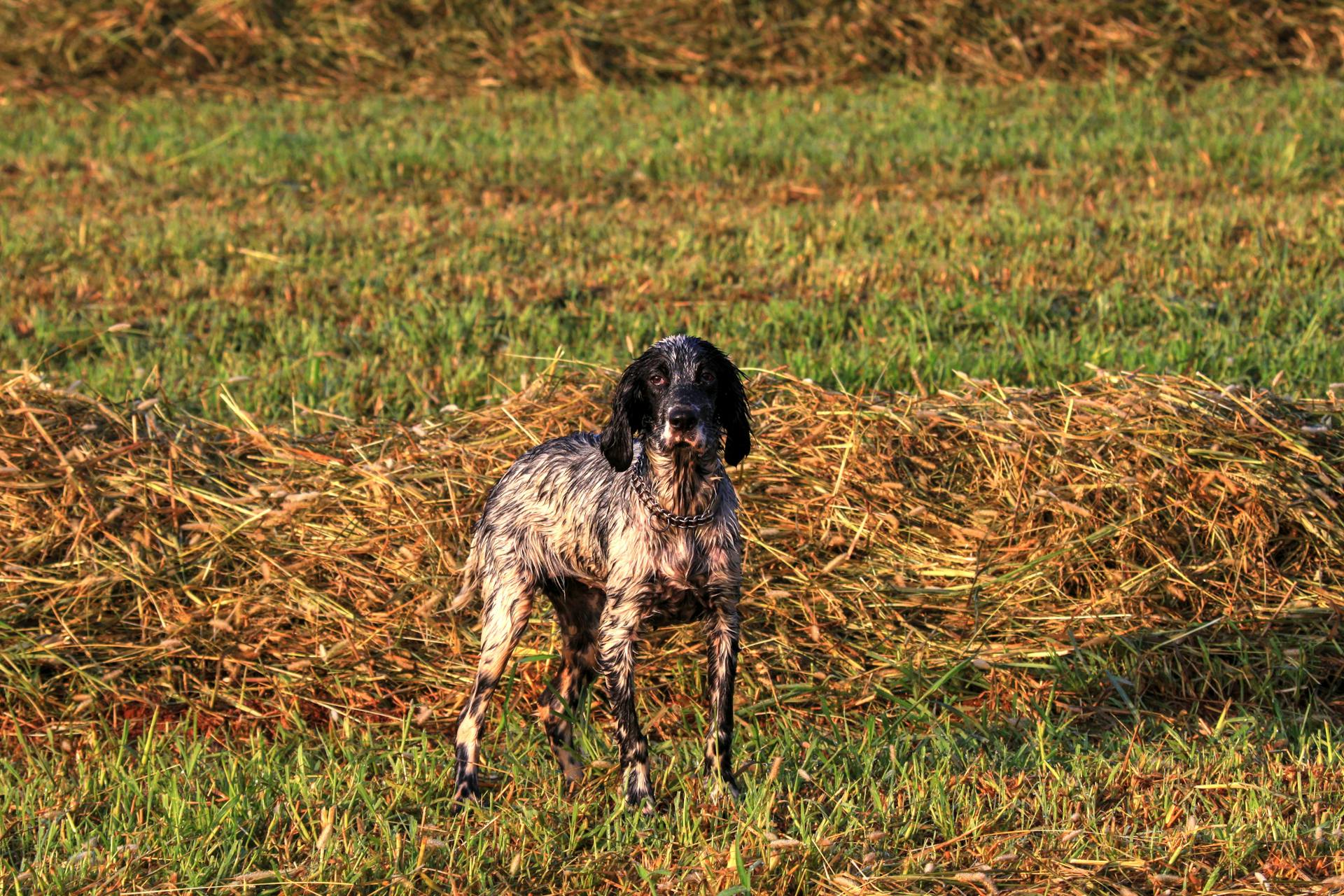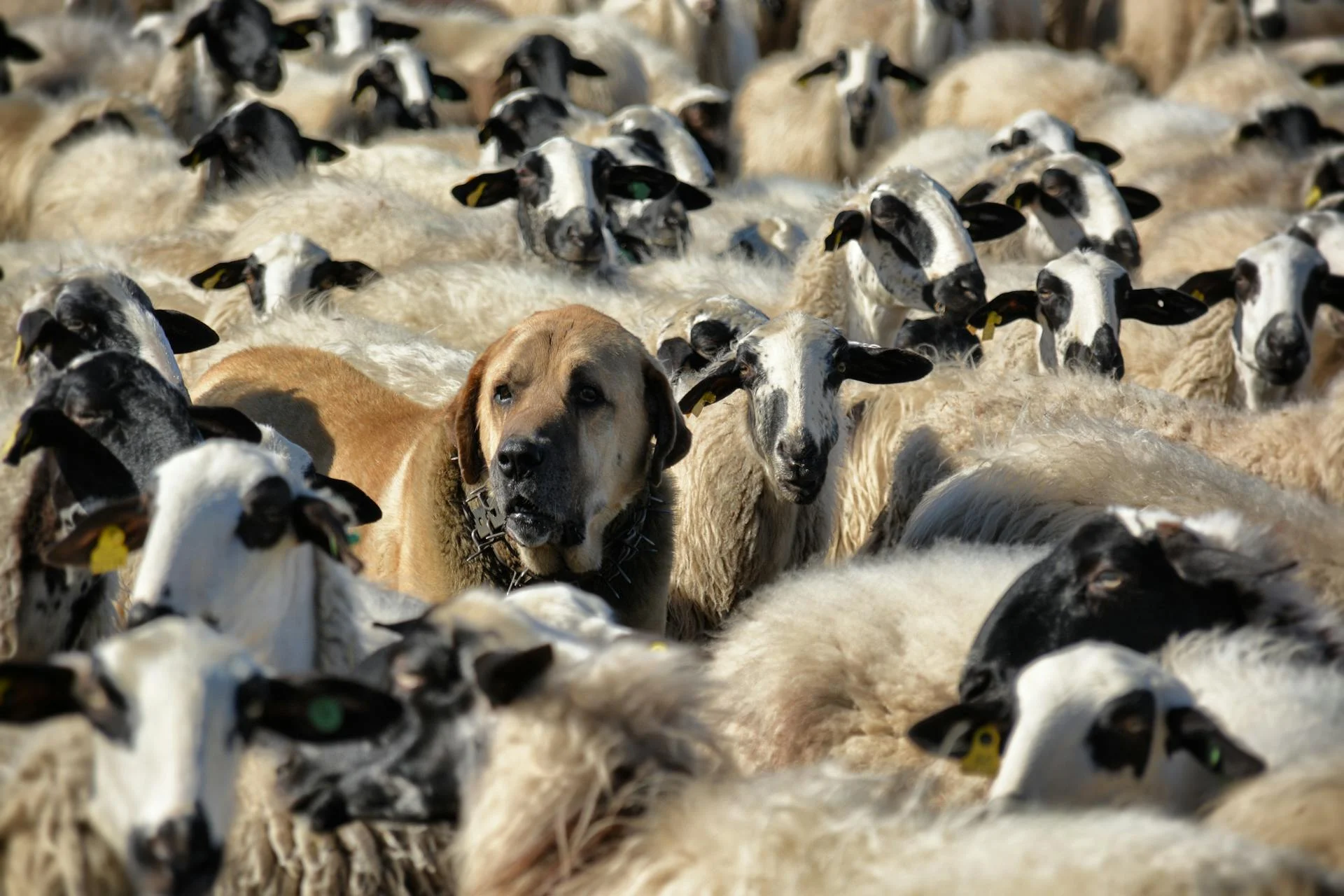
English Setters are a beloved breed for many reasons, but they do come with a significant price tag.
The average cost of an English Setter puppy from a reputable breeder is around $1,500 to $3,000.
Their beautiful, long coats require regular grooming to prevent matting and tangling.
English Setters typically live for 10 to 12 years, making them a long-term companion.
They need regular exercise to stay happy and healthy, and a daily walk or playtime is a must.
Their high energy levels also make them a great fit for active families or individuals who enjoy outdoor activities.
Cost and Care
Grooming is a significant aspect of English setter care, and regular brushing is a must to prevent tangles and mats. Brushing your English setter's long hair once a week is a good starting point.
Baths are necessary at least once a month, and trimming the longer hair can be a good idea to keep it under control. English setters don't shed as much as many other dogs, but they still require regular grooming.

Cleaning your English setter's ears every week is crucial, as they don't get much air circulation. Trimming nails and brushing teeth regularly are also essential parts of their grooming routine.
Regular grooming can be a breeze if you start early, especially if you get your English setter used to the routine when they're still a puppy. This will make the process faster and easier for everyone over their lifespan.
Temperament and Personality
English Setters are incredibly intelligent, making them quick to pick up on commands and take joy in learning new things.
Their intelligence and desire to learn require plenty of mental stimulation, such as outdoor games and interactive puzzles, to prevent boredom and mischievous behavior.
English Setters have a delightful personality characterized by affection, kindness, and gentleness, making them a great family pet.
They're lively and energetic, yet not overly active to overwhelm their owners, and will readily welcome those you introduce to them.

English Setters are natural alertness, and will bark to alert you when someone approaches the home, but they're also curious and playful, showing a willingness to interact with people and enjoy their company.
Early socialization is crucial for English Setters, exposing them to diverse people, environments, and experiences during their formative months.
They can be a bit independent thinkers due to their hunting heritage, but training them with kindness and consistency using positive reinforcement, such as food rewards and praise, yields the best results.
English Setters are smart and can remember what they're taught right away, making basic training a breeze with positive reinforcement.
They're great with kids, especially if they're laid back and well-socialized, and can even make great therapy dogs due to their calm temperament.
English Setters coexist well with other dogs and do well with cats, too, making them a great addition to many families.
Because of their intelligence, they pick up basic training easily, but it's essential to socialize them properly at a young age to ensure they grow into well-rounded dogs.
Health and Conditions
English Setters are generally healthy dogs, but like all breeds, they can be susceptible to certain health conditions. They typically live between 12–15 years, but may start to show their age around 9 years old.
One health concern to be aware of is deafness, which affects about 2 percent of tested puppies, causing them to lose hearing in one or both ears. Regular visits to the veterinarian can help detect this issue early on.
Allergies are another common health issue in English Setters, which can cause a range of symptoms from mild to severe. If you suspect your dog has an allergy, it's essential to consult with a veterinarian for proper diagnosis and treatment.
Hip dysplasia is a condition that can affect English Setters, causing arthritis and mobility issues. Testing for hip dysplasia is recommended when bringing home a new puppy.
Some English Setters may also be prone to thyroid disease, specifically autoimmune thyroiditis, where the immune system attacks the thyroid gland. In some cases, dogs may not exhibit symptoms, making it crucial to get regular check-ups with a veterinarian.
Here are some common health concerns to be aware of in English Setters:
- Deafness
- Thyroid disease (autoimmune thyroiditis)
- Allergies
- Hip dysplasia
- Cancer (mostly hemangiosarcoma and lymphoma in older dogs)
Feeding and Nutrition
Feeding an English Setter requires approximately 2 to 3 cups of high-quality dry food per day, split into two meals. However, the precise amount may vary depending on factors like the dog's age, size, activity level, and metabolism.
You'll need to monitor your Setter's weight and energy levels to adjust the food intake accordingly. Each dog has its unique dietary needs, just like humans.
English Setters can be prone to obesity, so it's essential to keep an eye on their food intake and train them to leave you alone during dinnertime. They love sneaking crumbs and food off countertops, so be prepared for some mischief.
High-quality dog food provides essential nutrients and contributes to your pet's overall health and well-being. Look for well-balanced formulas that include protein, fats, vitamins, and minerals to support their active lifestyle and maintain their sleek coat.
Regular exercise is crucial for English Setters to keep them mentally and physically stimulated, as they are an active breed with a history of hunting and fieldwork. Engage them in daily activities like walks, runs, or play sessions to maintain their ideal weight and overall well-being.
Consulting with a veterinarian or a canine nutrition expert is a good idea when selecting the right food for your English Setter. They can recommend a diet that suits your dog's specific requirements, promoting optimal health and preventing potential health issues.
You might like: Why Are Labradors so Popular
Coat and Grooming

The English Setter's coat is one of its most striking features, with a flat texture and lovely fringe of hair, known as feathering, on the ears, chest, belly, thighs, legs, and tail.
Regular grooming is essential to maintain their coat's health and luster. Brushing at least three times a week, ideally daily, with a stiff bristle brush is recommended.
Shedding is normal, but regular brushing helps keep loose hairs off furniture and clothing. Brushing their coat regularly also helps prevent matting and tangling.
Baths should be given every 4-6 weeks to keep the dog smelling fresh. A cotton ball moistened with a veterinarian-recommended cleaning solution is great for gently wiping the visible part of the ear, which is essential due to their floppy ears.
Trimming stray hairs every six weeks contributes to a neat appearance. It's also a good idea to check with professional groomers or breeders if unsure about trimming.
Dental hygiene is crucial for English Setters, and brushing their teeth two or three times a week removes tartar buildup and prevents gum disease and bad breath.
Expand your knowledge: English Bull Terrier Ears
Return and Pet Compatibility

If you're considering bringing an English Setter into your family, it's essential to think about the return policy of the breeder or rescue organization.
In general, reputable breeders will have a return policy in place, allowing you to return the dog if it doesn't work out within a certain timeframe.
English Setters can make great family pets, but they do require regular exercise and attention to prevent boredom and destructive behavior.
If this caught your attention, see: Golden Retriever Family Dog
Return
Returning a pet, especially a puppy, can be a challenging and emotional experience for both you and your pet. You'll need to consider the breeder's policies and your local laws regarding pet returns.
English Setters are a breed that rarely shows up in shelters, so if you're looking to return a pet, it's essential to work with the breeder directly. Reputable breeders will often have a return policy in place, but be prepared for it to be pricey.
Returning an English Setter puppy to a breeder can be costly, so it's crucial to carefully consider your decision before bringing a pet home. If you're experiencing difficulties with your pet, it's better to address these issues early on rather than returning the pet.
Curious to learn more? Check out: Blue Staffordshire Bull Terrier Breeders

If you do decide to return a pet, make sure to inform the breeder of any health issues your pet may have, such as hip dysplasia, hypothyroidism, or deafness. This will help the breeder identify potential breeding issues and prevent future dogs from suffering from these conditions.
Here are some health conditions that may affect English Setters and require special care:
- Hip dysplasia: This can lead to arthritis and lameness in the rear legs.
- Hypothyroidism: This can cause infertility, obesity, and skin problems.
- Deafness: This can be challenging to manage, but special aids like vibrating collars can help.
- Elbow dysplasia: This can cause joint laxity, painful arthritis, and lameness.
Pet Compatibility
English Setters are generally great with other pets, but they do have hunting instincts, so early socialization is crucial to ensure they get along with smaller animals.
They'll love playing with dogs of all sizes and can even get along with felines, but it's essential to supervise interactions closely.
You should never leave your English Setter alone with smaller animals, like birds or rabbits, just in case they can't resist their instincts.
Owning a Dog
You'll need to consider the cost of high-quality dog food, which can range from $50 to $75 per month for an English Setter.
Size and Appearance

English Setters are a medium to large-sized breed, with males standing between 24 to 27 inches tall and weighing 55 to 80 pounds.
Their weight and height vary slightly between males and females, with females weighing between 45 to 70 pounds and standing 23 to 26 inches tall.
They have a well-balanced and sturdy frame, giving them an athletic appearance that showcases their agility and endurance.
Their long, flowing coat is one of their most distinctive features, with feathering on the ears, chest, abdomen, and legs.
Breed History
The English Setter breed has a rich history that dates back to the 1600s. They were originally bred as hunting dogs in the United Kingdom.
Their name comes from the way they sit (or set) when they find game. They were designed to point rather than sit by the game, making them excellent pointers and hunters.
The breed is a mix of Springer Spaniels, Large Water Spaniels, and Spanish Pointers, combined with the Setter background. This unique blend of breeds gives them their distinctive appearance and abilities.

The flecks in the fur are called "belton" and come from the town where Edward Laverack, the man who started the breed, hunted. These flecks can be blue and tan, blue, lemon orange, and liver colored.
Edward Laverack began the breed in 1825 and it is this bloodline that all English Setters are based on.
Appearance
The English Setter is a stunning breed, and their appearance is one of their most striking features. They come in a variety of colors, including lemon, orange, and liver, and have a distinctive belton coat pattern.
Their size is impressive, with males weighing between 65-80 pounds and standing 25-27 inches tall, while females weigh between 45-55 pounds and stand 23-25 inches tall. English Setters are on the larger end of medium-sized dogs.
Their elegant build is characterized by a long, refined muzzle, large, dark eyes, and a black nose. Their ears are pendant in shape and covered in fine, silky hair, giving them a feathery appearance.

Their long, flowing coat is one of their most charming traits, with feathering on the ears, chest, abdomen, and legs. The fur is flat and has no curl or woolliness, making it a joy to groom.
English Setters have a long neck, muscular, straight legs, and a square muzzle with large nostrils. Their large, dark eyes give them an intelligent and curious expression.
Their tail is long, straight, and has a long fringe like the rest of the body. Their graceful gait gives them a floating appearance with the long, feathers flowing in the wind.
A fresh viewpoint: English Mastiff Large
Frequently Asked Questions
Are English Setters rare?
English Setters are a relatively rare breed, ranking 98th among AKC-registered breeds. They are a unique and special breed worth learning more about.
Featured Images: pexels.com


